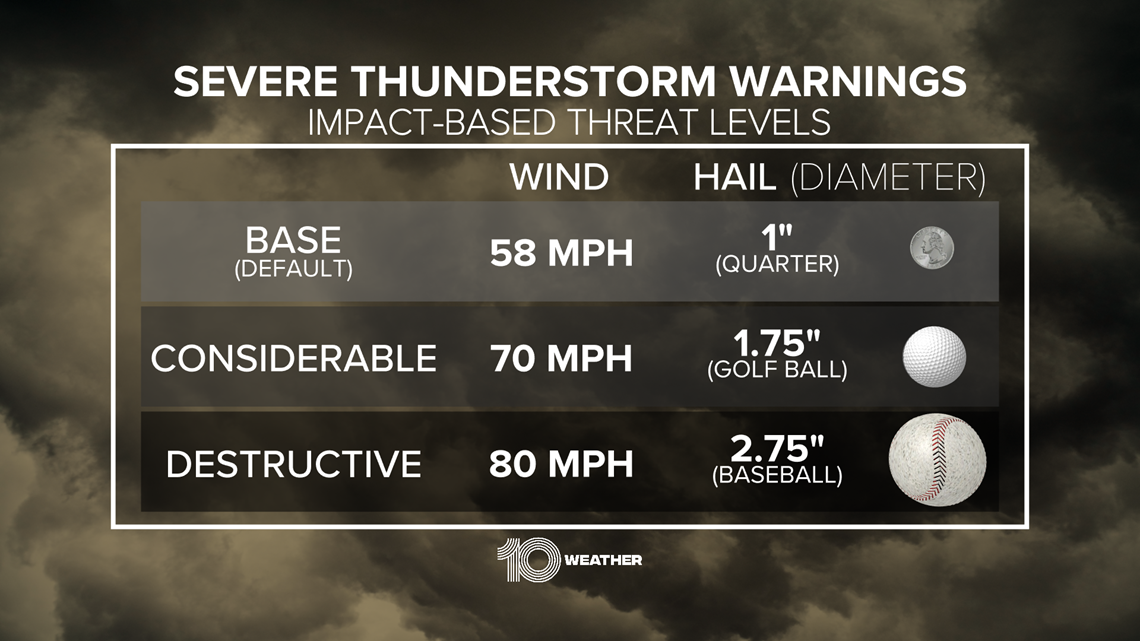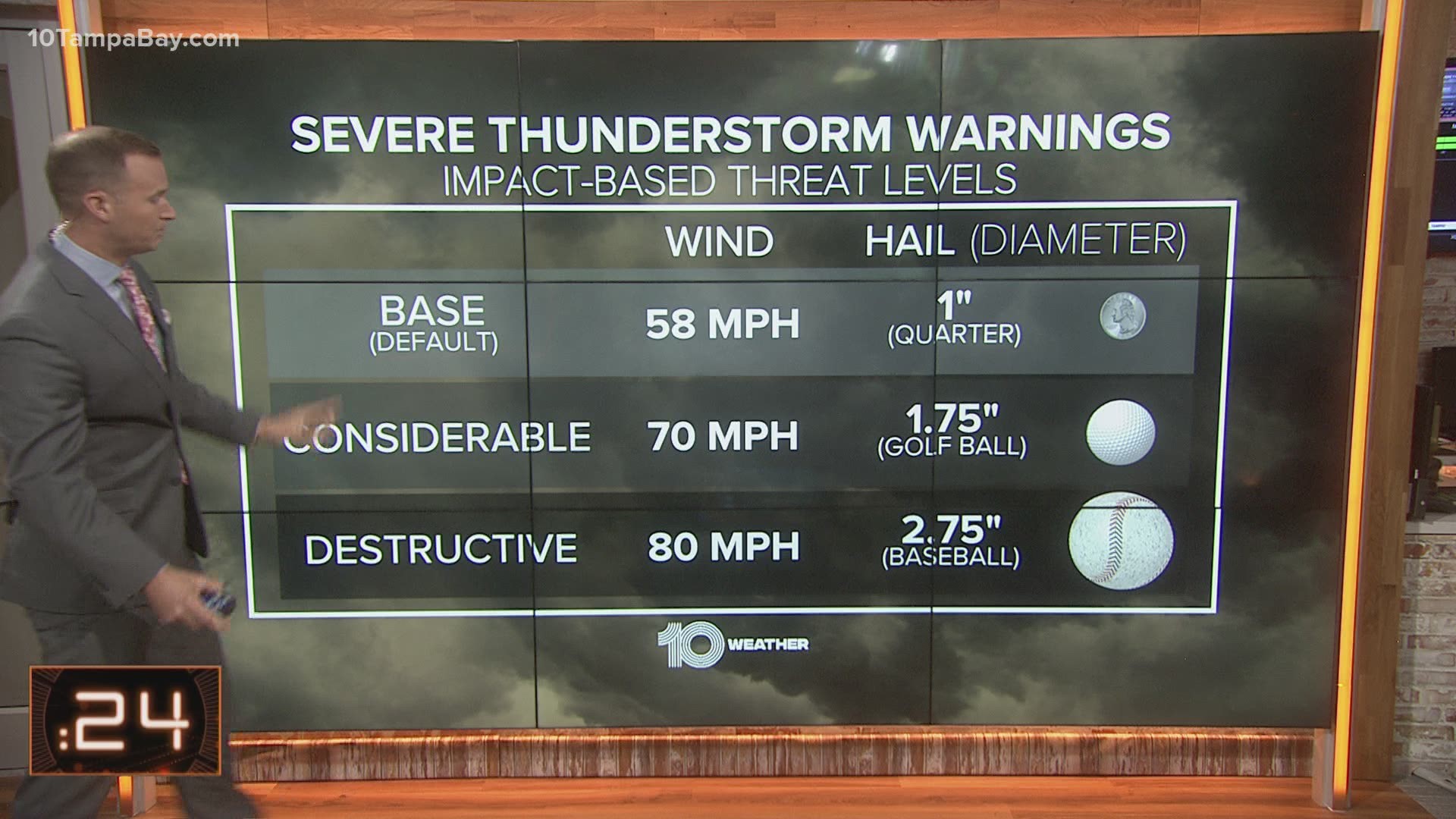Historically, all severe thunderstorms, no matter how strong, have been treated equally by the National Weather Service (NWS). But a severe thunderstorm with winds of 58 mph has fewer impacts than a more violent storm with winds over 70 mph.
So sometime in late April, the NWS will start describing severe thunderstorm warnings based on their threat level. This will help the public understand the impact potential from a storm that could bring moderate, considerate or destructive damage from wind and hail.
Currently, the NWS issues a severe thunderstorm warning when a storm is capable of producing wind gusts of at least 58 mph and/or hail at least 1 inch (quarter size) in diameter. Sometimes these warnings indicate a tornado is also possible.
Effective on or around April 28, 2021, the NWS will implement the new descriptions of the severe thunderstorm warning based on their potential impact. These warnings will now be based on three categories.
The first warning category will be for storms that meet the current severe thunderstorm criteria of at least 58 mph winds and/or hail at least 1 inch in diameter. These warnings will be issued like they are now.
The noticeable difference for the public will be with storms that have the threat of significantly stronger winds and/or large hail. These storms will be placed in one of two higher-end categories.
These warnings will state the thunderstorm damage threat is either "considerable" or "destructive," based on the minimum wind and/or hail threat in the graphic below.


The majority of storm warnings are issued for lower-end storms which, in Tampa Bay, occur frequently. During our stormy season, they’re so common and can affect such small areas that some people tune them out.
While all severe thunderstorms threaten life and property, stronger storms bring a stronger threat. The new warning system is aimed at helping people quickly prepare for the various threats storms give their area.
Eventually, severe thunderstorm warnings in the most dangerous "destructive" category will be recommended to activate a Wireless Emergency Alert (WEA) on cell phones. This will be in addition to several other types of NWS warnings that already trigger a WEA to be activated, such as tornado warnings. The new severe thunderstorm WEA will be implemented on a date to be determined sometime after April 28.
According to the Washington Post, Greg Schoor, severe weather program lead at the NWS, estimates only about 2 percent of all severe thunderstorm warnings will reach the “destructive” level necessary to trigger wireless emergency alerts but hopes they motivate people to take action.
If you want WEA alerts on your phone, double-check they are enabled in your phone’s settings. More info here: https://ready.gov/alerts.
- Tiger Woods expresses gratitude, recovering after car crash in Los Angeles
- Tampa teen accused of hacking into celebrity Twitter accounts to make court appearance
- You can register for a COVID-19 vaccine appointment at CVS
- Some moms are passing COVID-19 antibodies to their newborn babies
- St. Petersburg to rename library in honor of former President Barack Obama
►Breaking news and weather alerts: Get the free 10 Tampa Bay app
►Stay In the Know! Sign up now for the Brightside Blend Newsletter

